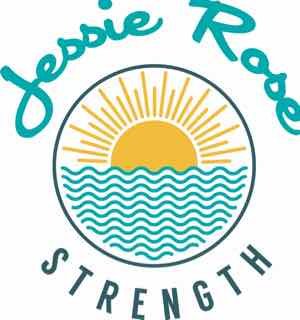What the Health: 3 Compelling Reasons to Eat the Rainbow
One of the most common pieces of nutrition advice thrown around is to “eat the rainbow." I really like this advice because it simplifies several topics that could otherwise be very overwhelming for the average eater. What does it mean to eat the rainbow? To eat a wide enough variety of fruits and vegetables of different colors to consume a full range of nutrients. While a lot of the value is in the simplicity, it helps to understand a bit of the “why” behind this concept.
So, here are three reasons why we should eat the rainbow:
Reason number 1: To Get All Essential Vitamins & Minerals
The human body is an incredible organism on its own, but it needs certain nutrients in order for it to function properly. There are 13 essential vitamins and approximately 16 essential minerals (there seems to be some conflicting information on exactly how many minerals) that must be consumed. Let me say it again for the people in the back- these vitamins and minerals can only be acquired through our diet, our bodies will not produce them on their own. And they are critical for optimal health and functioning.
I won’t go into all the nitty gritty details of every single one, but there are four fat-soluble vitamins, which means they need to be in the presence of fat to be absorbed and that excess amounts can be stored in body tissues. The fat soluble vitamins are vitamins A, K, E and D.
There are nine water soluble vitamins, which means they are easily dissolved in water and that excess amounts will be eliminated easily with our other bodily waste (which is why sometimes your pee is so bright after you take a B vitamin). The nine water soluble vitamins are vitamin C and the B vitamins: thiamin (B1), riboflavin (B2), niacin (B3), pantothenic Acid (B5), pyridoxine (B6), biotin (B7), folate (B9) and cobalamin (B12).
The macro minerals (needed in larger amounts) that we require include calcium, chloride, magnesium, phosphorus, potassium, sodium and sulfur. You might recognize some of these as electrolytes. When we sweat, they are depleted more quickly and sometimes we need a supplement to replenish more quickly. The required trace minerals (needed in smaller amounts) include copper, chromium, iodine, iron, manganese, selenium and zinc.
Phew. Did I lose you?? This is already way too many things to keep track of. Can you imagine if you had to track all of these nutrients every day?? You wouldn’t have time for anything else! This is where the simple advice, “eat the rainbow” comes in. Assuming you have access to quality food (which is a much bigger discussion for another day), as long as you’re eating a decent variety of different fruits and vegetables, you are unlikely to develop any significant deficiencies.
The exact combinations of foods does not matter. Just eat the widest variety you can stand as often as you can. It also helps to apply the “rainbow” principle to all the food groups, not just fruits and veggies. Eating a variety across all food groups, including meats and grains, will further optimize nutritional exposure.
** As always, this is not to be considered medical advice. If you suspect you have any deficiencies, PLEASE consult your doctor and get the appropriate tests.
Reason Number 2: To Support the Gut Microbiome via Polyphenols
What are polyphenols? So glad you asked.
Polyphenols are micronutrients that naturally occur in fruits, vegetables, tea and spices. They develop as defense mechanisms for plants and when we consume and absorb them, we also benefit from those defenses. One of the ways polyphenols show up in foods is in the color (DING DING, here’s our rainbow reference!!), as well as the flavor, odor, oxidative stability and bitterness. There are more than 8,000 known polyphenolic compounds, so you can imagine they offer an extremely wide range of benefits. The most common polyphenols to show up in our foods are flavonoids, which have a large influence on fruit color.
The content of polyphenols is affected by environmental factors, such as soil type and sun exposure, as well as ripeness. The bioavailability of polyphenols also varies. The best chance of optimal absorption is through a healthy gut microbiome, which is convenient, because consuming a wide variety of polyphenols also helps support a healthy microbiome! it’s a win win!
The benefits of polyphenols are vast, if you’re interested, this article https://gokaibae.com/blogs/blog/polyphenols goes into more detail.
Reason Number 3: The Energetics of Food
Traditional Chinese medicine uses food as medicine. They believe that foods have distinct energies and characteristics that either nourish and balance our bodies, or create or exacerbate imbalances, which can lead to sickness. As such, they classify foods in different categories based on their energetic qualities. For example, grounding & relaxing foods include root veggies, sweet veggies, meat, fish and beans. Light and flexible foods with a quality of creativity include leafy greens, wheat, barley, quinoa, fruit, raw foods, and chocolate. On the flip side, sugar, caffeine and alcohol are considered to have tense and anxious qualities while organic foods, whole foods and local foods are considered connected and harmonious.
This is obviously very simplified for our purposes today, but hopefully highlights another perspective to the balance that can come from eating a variety of foods.
As you can see, there are many layers to the benefits of ‘eating the rainbow’ and including variety in your diet. The next time you are at the grocery store or the farmer’s market, try branching out and getting some different colored fruits and vegetables. Maybe even get wild and try a new grain or a different protein source! You can do it!
Have fun and good luck out there.
Originally posted August 22, 2022.
Resources:
https://www.ncbi.nlm.nih.gov/pmc/articles/PMC2835915/
https://gokaibae.com/blogs/blog/polyphenols
https://www.verywellfit.com/what-is-a-niacin-flush-2506552
Micronutrients 101 by IIN; Synthesized from Medeiros, D. M. & Wildman, R. E. C. (2015). Advanced human nutrition (3rd ed.). Burlington, MA: Jones & Bartlett Learning.




